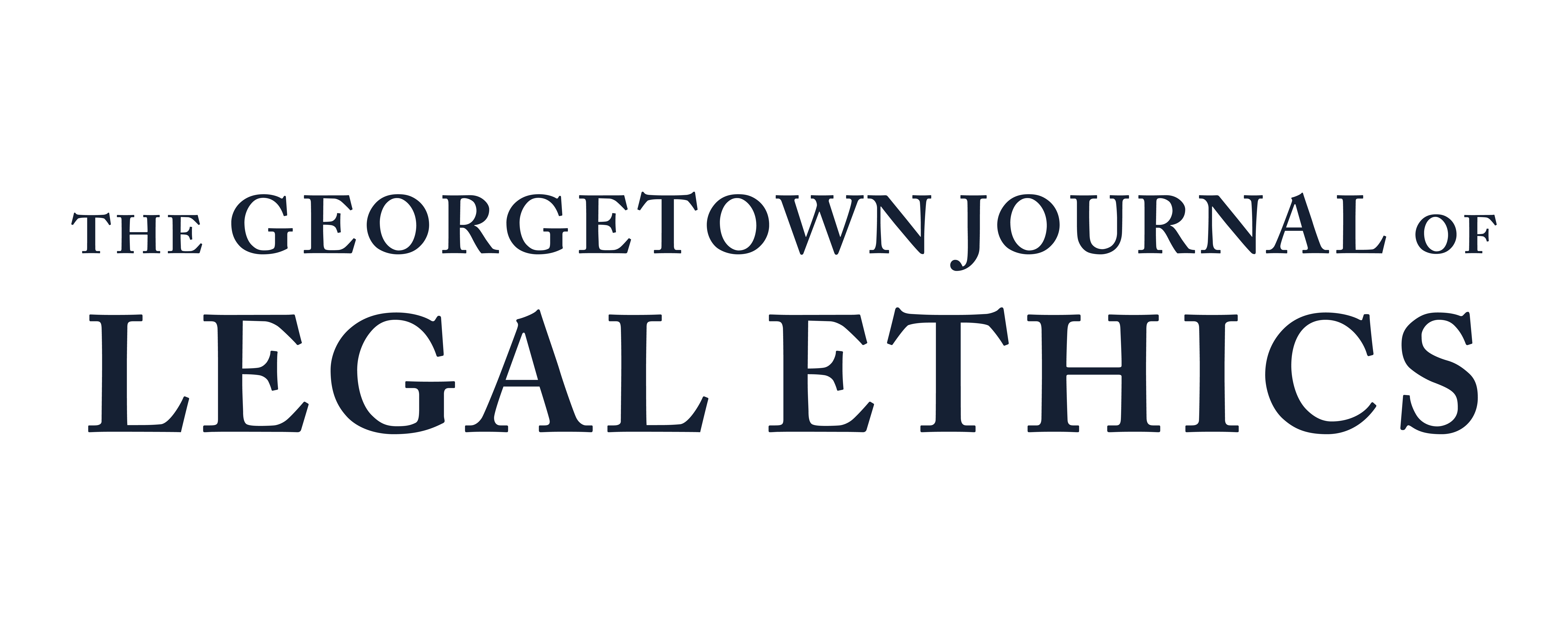This Is Not Legal Advice: Managing Conflicts with Potential Clients
April 10, 2025 by Charlie Williams

Introduction
A friend or family member casually asking for legal advice is a universal experience for law students. Most have probably felt the urge to reply with a statement starting along the lines of “I’m not a lawyer yet, but . . . .” However, that “but” can pose a real problem once you are a practicing attorney. Model Rule 1.18 lays out the duties a lawyer has to a prospective client, and even a casual conversation can give rise to a disqualifiable conflict.[1] That may not seem like a huge issue, but unwittingly providing advice only to later find out the person you provided advice to has interests adverse to those of a client of your firm is a situation best avoided. In order to avoid that scenario, it’s best to know exactly what level of interaction gives rise to a disqualifiable conflict.
What Gives Rise to a Disqualifiable Conflict?
It is surprisingly easy to form an unintended relationship that gives rise to a disqualifiable conflict. Model Rule 1.18 defines a prospective client as “a person who consults with a lawyer about the possibility of forming a client-lawyer relationship with respect to a matter.”[2] That means that even if an attorney-client relationship does not ultimately form, the person seeking advice could be considered a potential client under Model Rule 1.18(a). Once an attorney learns information from a person, that person is considered a potential client, and the lawyer has a duty of confidentiality.[3] As such, attorneys need to be cautious even during casual or preliminary discussions.
Take, for example, a voicemail from an acquaintance about a legal issue. Lawyers need to be cautious in such a scenario. Simply listening to the message to determine what it is about and promptly deleting it likely will not give rise to a conflict. But, if the attorney returns the call and actively seeks out additional information or offers even casual advice, that will likely be enough to give rise to potential conflicts or even disqualification.
Risk of Disqualification
One of the primary concerns when interacting with prospective clients is the potential for conflicts of interest or disqualification. If an attorney learns information from a person or provides a person with preliminary advice, it can lead to disqualification. Model Rule 1.18(c) states that an attorney cannot “represent a client with interests materially adverse to those of a prospective client in the same or a substantially related matter if the lawyer received information from the prospective client that could be significantly harmful to that person in the matter.”[4] What’s more, the conflict can be imputed onto all lawyers at the same firm as the conflicted attorney.[5] In order to prevent the imputation of a conflict to the entire firm, lawyers must avoid learning any more disqualifying information than is reasonably necessary and be screened from any matter relating to the conflict.[6] Even then, the firm must still provide notice to prospective clients about the conflict.[7]
An attorney offering casual advice also faces an even greater risk—they may engage in the unauthorized practice of law. Model Rule 5.5 allows attorneys to work with clients outside of their jurisdiction on a temporary basis, but only if the matter is “reasonably related to the lawyer’s practice in a jurisdiction in which the lawyer is admitted to practice.”[8] Because of this, lawyers also have to be cognizant of the type of advice they give. If it is outside of their area of practice and unrelated to their work, they run a real risk of engaging in unauthorized practice of law.
Best Practices
There are both proactive and reactive steps attorneys can take to mitigate the risk of unintentional conflict. The proactive side can be tricky, especially when dealing with friends. No one wants to be seen as dismissive of their friends’ problems. One option is to perform a conflict check prior to offering any advice or seeking out more information. Then, if the attorney decides to, the attorney can formally take on the matter without worrying about disqualification down the road. Alternatively, if an attorney is confident they do not want to take on the matter, they can offer resources instead of specific information. An attorney can inform the person they do not work in that area of law and point the person to a group that does, or another resource with information on the matter. Finally, if an attorney wants to be cautious, they can formally decline all requests for legal assistance, even if the request was casual or in passing.
If an attorney is not proactive and finds themselves reacting to a conflict from a potential client, Rule 1.18(d) provides guidance on how to prevent the conflict from being imputed onto the entire firm. The first option is to get written, informed consent from both the prospective client and the adverse client consenting to representation.[9] The alternative is for the conflicted attorney to take steps to ensure they do not learn any more information, make sure they are screened from the matter, and give written notice to the prospective client.[10]
Conclusion
Conflicts are an inevitable part of working in the law, but it is best to avoid unnecessary conflicts when possible. Because even casual conversations can give rise to conflicts, it is best to preemptively perform a conflict check or promptly decline to offer legal advice. If a potential client relationship does arise, lawyers should take active steps to prevent the conflict from being imputed onto others.
[1] Model Rules of Prof’l Conduct R. 1.18 (2018) [hereinafter Model Rules].
[2] Model Rules R. 1.18(a).
[3] Model Rules R. 1.18(b).
[4] Model Rules R. 1.18(c).
[5] Id.
[6] Model Rules R. 1.18(d).
[7] Id.
[8] Model Rules R. 5.5(c)(3).
[9] Model Rules R. 1.18(d)(1).
[10] Model Rules R. 1.18(d)(2).

